The first generation Husky 701 was a slightly toned down KTM 690: a bit less power, less fierce delivery and less suspension travel with different settings – but still plenty to be getting on with.
Until the old Husky TE 610-engined SWMs, AJP PR7 and CCM GP450-replacement catch on, currently there’s nothing much like these two bikes since BMW’s Xchallenge was dropped in 2009. The short-lived Husky Terra and ancient XR650Ls and DR650s don’t compare. The 690/701s are hardcore, dirt thumpers where light weight (146kg dry) and performance trounce the comfort and equipment of your typical Tenere or KLR sofas, while still delivering excellent economy and RTW-usable service intervals.
Quick stats
- 67hp with 3 maps + bad fuel map
- 146kg dry
- 10,000km oil changes
- 36.6” / 927mm claimed seat height
- 13 litre tank (~390km possible range)
- ABS disengageable at the rear (or altogether with a widget)
- 18/21-inch wheels
- 2016 model £8000 / US$11,300 (or about two XR650Ls)
- The 2017s are more powerful and much smoother.

 Quiet pipe and motor
Quiet pipe and motor- Impression of quality and solid build
- Minimal transmission lash
- Light for what it is
- Usable low-down power
- Smooth hydraulic clutch
- Powerful but usable brakes
- Great WP suspension on all but roughest trails
- Great economy with a potential range of over 350km
- 10,000-km oil changes


- Vibration at >80kph
- Seat height
- Bit of a Picasso to look at, IMO
- Fuel filler will be under a tail pack
- Low-speed ABS gave me a fright, but it’s switchable
Husky’s 701 proves you can have nearly all your cake and eat it. It must be the lightest road-ready big thumper around, while not compromising on great suspension, brakes and response that can be mellow or a blast, depending on your mood or needs.

I’ve been curious to try out the 701 or its KTM cousin, and had a chance to rent one while on one of my Morocco tours. Although the trails we ride are easy enough, I was expecting it to be a handful, based on a short 690 ride a few weeks earlier.
In fact, once I got accustomed to the knobblies on the road (worn MT21 rear, Mitas Rockrider front) the 701 surprised me by being very manageable both there and on the trail. The thing would happily plod along at XR250 speeds (the bikes I rode with) without any impression it was straining at the leash. The suspension took it all in its stride and the brakes required no more finesse than you’d apply to any big thumper on the dirt.
The engine was torquey and felt much less harsh than what I recall of my BMW XCountry (some 10kg heavier with 20% less power). Like most modern, lean-burning engines it runs hot – the fan kicked in while pootling along on a warm 20°C afternoon at 1800m with a strong backwind, but the fuelling remained steady. (I don’t know which of the three engine maps I was on; the softest I suspect.)
There’s a switch under the seat – right). Only trickling along on a virtually closed throttle did it hesitate a bit, but that never affected the riding. The hydraulic clutch never varied in feel either, the gear changes were slick and even with a cush drive in the rear hub there was a welcome absence of the transmission lash commonly found on Jap equivalents. (This bike had around 5500 rental kms on the clock.)
When the time came, it was great to be able to blast from 100 to 130kph with confidence – a typical overtaking manoeuvre. And all this achieved while returning the high 70s mpg (27.3 kpl – 77.3 mpgUK – 64.3 mpgUS). With the claimed 13-litre tank, that’s an very useful potential range of over 350km when herding a bunch of feline XRs. A year later a customer rode the same bike as hard as he could to the point of crashing, and was getting about 50mpg.
This all makes it sound like a great travel bike now that the remaining Japanese thumpers: XR650L; DR650; the late XT660Z, Kawasaki KLR650 (some in production for over a quarter century) clock in at up to 200 kilos and with little more than half the Husky’s power, even if they are up to half the price.
For me the fly in the ointment was vibration on the road. It may have been exaggerated by the knobblies, but you just can’t get away with it on any 690cc single banging out nearly 100hp/litre. Have I got so used to smooth bikes like 250s and Honda’s CB500X? It shocked me when I tried the 690 after riding my WR250 the other week – and it felt even worse on the 701 at over 80kph. My throttle hand was going numb, and you’d have to be in a real hurry or somehow immunised to want to sustain over 100kph for long. Softer grips might help. The seat while hard, but over a full day actually no less butt-numbing than the XRs I rode later. It’s the same on my WR – a narrow seat need not be a write off; it must be down to the foam. But when I took a well-used XR250 for a quick spin I was staggered by how smooth and cushy it was. A week earlier I rode everything the Husky managed with near equal ease and as much fun.
At rest I got my toes down OK but getting your leg over the 36-inch + seat height will become a pain when you’re on the road with all your clobber and getting tired. A weekend’s trail biking might not be a bother, but travelling for weeks or months it might just get on your wick.
As a travel bike I’d say it only suits those committed to uncompromising off-road touring but even then, do you really need 67hp to manage the BAM track; the gnarliest Sahara crossing or highest Himalayan traverse? Even on some sort of semi-competitive event or rec’ riding with your mates, using it to it’s full potential, the weight – modest though it is – would soon become hard to handle.
I’d be happy to lose 10-20% off that peak power if it corresponded to much less vibration and so a more usable travel machine which would still have amazing (or perhaps even better?) economy and oil change intervals with the light weight. That bike probably isn’t the SWM’s SuperDual 650X but might be AJP’s PR7 or the forthcoming CCM GP600 – all use the old Husky red-top TE630 motor. But anyway, cushy travel bikes are not what KTM (Husky owners) do. These days it has to be all or nothing or an overweight Japanese dinosaur. Still, KTM/Husky at least prove that an economical, sub-150-kilo big thumper with a useful range and rideable engine can be produced.

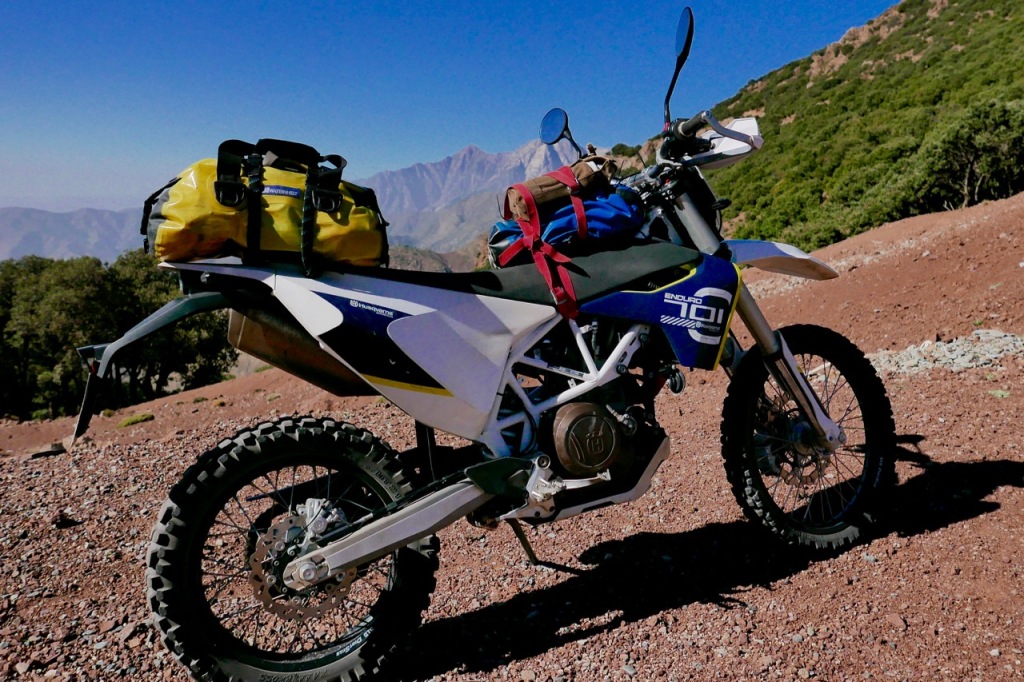

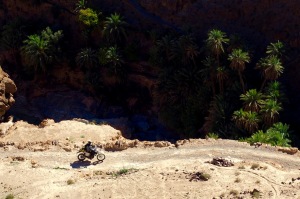
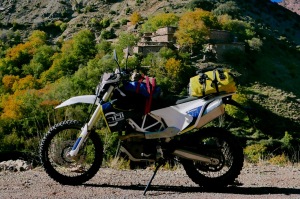




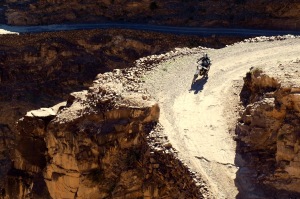

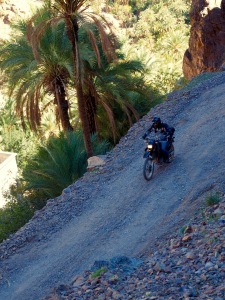
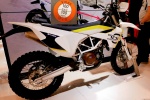

the 2017 -on models (second counterbalancer added) are drastically in another league in terms of engine vibrations, compared with the 2016 models.
i have driven both, hundreds of kilometers. the 2016 is plainly numbing with those vibrations (my hands went numb quickly), the 2017 feels totally different (i have never got hand numbness from it).
LikeLike
Thanks. Glad it wasn’t just me then. What puzzles me was that in 2016 they went ahead and made that gen 1 engine and thought: ‘Yep, that’s perfect. Press go’.
LikeLike
The high can be (semi) easily dealt with via a Kuba link, I described in on my blog http://www.husky701.com. In addition the bike is much better suited for long trips if a windsreen is added, – something like the RADE/GARAGE kit.
LikeLike
Since the ’17 model year there is an upgraded engine: a second balancer shaft, and hp bump to 74hp. It’s noticeably less vibey now.
BTW, I get numb hands from an hour on a WR250R, but grip puppies (foam grips) have resolved this for me, also on the 690 & 701.
LikeLike